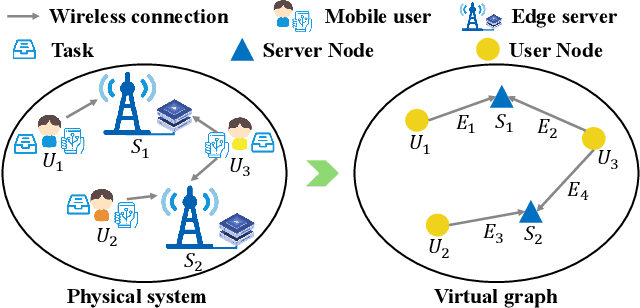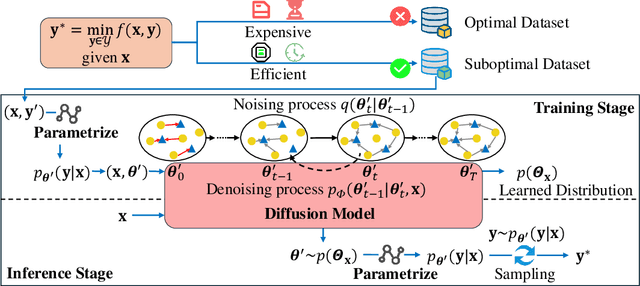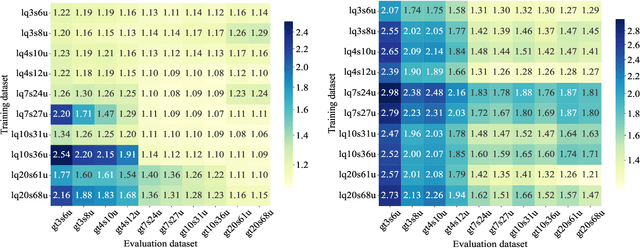Zhiwen Yu
MemoCue: Empowering LLM-Based Agents for Human Memory Recall via Strategy-Guided Querying
Jul 31, 2025Abstract:Agent-assisted memory recall is one critical research problem in the field of human-computer interaction. In conventional methods, the agent can retrieve information from its equipped memory module to help the person recall incomplete or vague memories. The limited size of memory module hinders the acquisition of complete memories and impacts the memory recall performance in practice. Memory theories suggest that the person's relevant memory can be proactively activated through some effective cues. Inspired by this, we propose a novel strategy-guided agent-assisted memory recall method, allowing the agent to transform an original query into a cue-rich one via the judiciously designed strategy to help the person recall memories. To this end, there are two key challenges. (1) How to choose the appropriate recall strategy for diverse forgetting scenarios with distinct memory-recall characteristics? (2) How to obtain the high-quality responses leveraging recall strategies, given only abstract and sparsely annotated strategy patterns? To address the challenges, we propose a Recall Router framework. Specifically, we design a 5W Recall Map to classify memory queries into five typical scenarios and define fifteen recall strategy patterns across the corresponding scenarios. We then propose a hierarchical recall tree combined with the Monte Carlo Tree Search algorithm to optimize the selection of strategy and the generation of strategy responses. We construct an instruction tuning dataset and fine-tune multiple open-source large language models (LLMs) to develop MemoCue, an agent that excels in providing memory-inspired responses. Experiments on three representative datasets show that MemoCue surpasses LLM-based methods by 17.74% in recall inspiration. Further human evaluation highlights its advantages in memory-recall applications.
AI-Empowered Channel Generation for IoV Semantic Communications in Dynamic Conditions
Jul 02, 2025Abstract:The Internet of Vehicles (IoV) transforms the transportation ecosystem promising pervasive connectivity and data-driven approaches. Deep learning and generative Artificial Intelligence (AI) have the potential to significantly enhance the operation of applications within IoV by facilitating efficient decision-making and predictive capabilities, including intelligent navigation, vehicle safety monitoring, accident prevention, and intelligent traffic management. Nevertheless, efficiently transmitting and processing the massive volumes of data generated by the IoV in real-time remains a significant challenge, particularly in dynamic and unpredictable wireless channel conditions. To address these challenges, this paper proposes a semantic communication framework based on channel perception to improve the accuracy and efficiency of data transmission. The semantic communication model extracts and compresses the information to be transmitted. In addition, the wireless channel is estimated by using a generative diffusion model, which is employed to predict the dynamic channel states, thereby improving the quality of IoV service. In dynamic scenarios, however, the channel estimation performance may be degraded when substantially new scenarios take place, which will adversely affect user experience. To mitigate this limitation, we employ a large model to fine-tune the channel generation model to enhance its adaptability for varying scenarios. The performance and reliability of the proposed framework are evaluated on the two public datasets.
Dynamical ON-OFF Control with Trajectory Prediction for Multi-RIS Wireless Networks
May 27, 2025Abstract:Reconfigurable intelligent surfaces (RISs) have demonstrated an unparalleled ability to reconfigure wireless environments by dynamically controlling the phase, amplitude, and polarization of impinging waves. However, as nearly passive reflective metasurfaces, RISs may not distinguish between desired and interference signals, which can lead to severe spectrum pollution and even affect performance negatively. In particular, in large-scale networks, the signal-to-interference-plus-noise ratio (SINR) at the receiving node can be degraded due to excessive interference reflected from the RIS. To overcome this fundamental limitation, we propose in this paper a trajectory prediction-based dynamical control algorithm (TPC) for anticipating RIS ON-OFF states sequence, integrating a long-short-term-memory (LSTM) scheme to predict user trajectories. In particular, through a codebook-based algorithm, the RIS controller adaptively coordinates the configuration of the RIS elements to maximize the received SINR. Our simulation results demonstrate the superiority of the proposed TPC method over various system settings.
RoHyDR: Robust Hybrid Diffusion Recovery for Incomplete Multimodal Emotion Recognition
May 23, 2025Abstract:Multimodal emotion recognition analyzes emotions by combining data from multiple sources. However, real-world noise or sensor failures often cause missing or corrupted data, creating the Incomplete Multimodal Emotion Recognition (IMER) challenge. In this paper, we propose Robust Hybrid Diffusion Recovery (RoHyDR), a novel framework that performs missing-modality recovery at unimodal, multimodal, feature, and semantic levels. For unimodal representation recovery of missing modalities, RoHyDR exploits a diffusion-based generator to generate distribution-consistent and semantically aligned representations from Gaussian noise, using available modalities as conditioning. For multimodal fusion recovery, we introduce adversarial learning to produce a realistic fused multimodal representation and recover missing semantic content. We further propose a multi-stage optimization strategy that enhances training stability and efficiency. In contrast to previous work, the hybrid diffusion and adversarial learning-based recovery mechanism in RoHyDR allows recovery of missing information in both unimodal representation and multimodal fusion, at both feature and semantic levels, effectively mitigating performance degradation caused by suboptimal optimization. Comprehensive experiments conducted on two widely used multimodal emotion recognition benchmarks demonstrate that our proposed method outperforms state-of-the-art IMER methods, achieving robust recognition performance under various missing-modality scenarios. Our code will be made publicly available upon acceptance.
JointDistill: Adaptive Multi-Task Distillation for Joint Depth Estimation and Scene Segmentation
May 15, 2025Abstract:Depth estimation and scene segmentation are two important tasks in intelligent transportation systems. A joint modeling of these two tasks will reduce the requirement for both the storage and training efforts. This work explores how the multi-task distillation could be used to improve such unified modeling. While existing solutions transfer multiple teachers' knowledge in a static way, we propose a self-adaptive distillation method that can dynamically adjust the knowledge amount from each teacher according to the student's current learning ability. Furthermore, as multiple teachers exist, the student's gradient update direction in the distillation is more prone to be erroneous where knowledge forgetting may occur. To avoid this, we propose a knowledge trajectory to record the most essential information that a model has learnt in the past, based on which a trajectory-based distillation loss is designed to guide the student to follow the learning curve similarly in a cost-effective way. We evaluate our method on multiple benchmarking datasets including Cityscapes and NYU-v2. Compared to the state-of-the-art solutions, our method achieves a clearly improvement. The code is provided in the supplementary materials.
SURGEON: Memory-Adaptive Fully Test-Time Adaptation via Dynamic Activation Sparsity
Mar 26, 2025Abstract:Despite the growing integration of deep models into mobile terminals, the accuracy of these models declines significantly due to various deployment interferences. Test-time adaptation (TTA) has emerged to improve the performance of deep models by adapting them to unlabeled target data online. Yet, the significant memory cost, particularly in resource-constrained terminals, impedes the effective deployment of most backward-propagation-based TTA methods. To tackle memory constraints, we introduce SURGEON, a method that substantially reduces memory cost while preserving comparable accuracy improvements during fully test-time adaptation (FTTA) without relying on specific network architectures or modifications to the original training procedure. Specifically, we propose a novel dynamic activation sparsity strategy that directly prunes activations at layer-specific dynamic ratios during adaptation, allowing for flexible control of learning ability and memory cost in a data-sensitive manner. Among this, two metrics, Gradient Importance and Layer Activation Memory, are considered to determine the layer-wise pruning ratios, reflecting accuracy contribution and memory efficiency, respectively. Experimentally, our method surpasses the baselines by not only reducing memory usage but also achieving superior accuracy, delivering SOTA performance across diverse datasets, architectures, and tasks.
CrowdHMTware: A Cross-level Co-adaptation Middleware for Context-aware Mobile DL Deployment
Mar 06, 2025Abstract:There are many deep learning (DL) powered mobile and wearable applications today continuously and unobtrusively sensing the ambient surroundings to enhance all aspects of human lives.To enable robust and private mobile sensing, DL models are often deployed locally on resource-constrained mobile devices using techniques such as model compression or offloading.However, existing methods, either front-end algorithm level (i.e. DL model compression/partitioning) or back-end scheduling level (i.e. operator/resource scheduling), cannot be locally online because they require offline retraining to ensure accuracy or rely on manually pre-defined strategies, struggle with dynamic adaptability.The primary challenge lies in feeding back runtime performance from the back-end level to the front-end level optimization decision. Moreover, the adaptive mobile DL model porting middleware with cross-level co-adaptation is less explored, particularly in mobile environments with diversity and dynamics. In response, we introduce CrowdHMTware, a dynamic context-adaptive DL model deployment middleware for heterogeneous mobile devices. It establishes an automated adaptation loop between cross-level functional components, i.e. elastic inference, scalable offloading, and model-adaptive engine, enhancing scalability and adaptability. Experiments with four typical tasks across 15 platforms and a real-world case study demonstrate that CrowdHMTware can effectively scale DL model, offloading, and engine actions across diverse platforms and tasks. It hides run-time system issues from developers, reducing the required developer expertise.
Orchestrating Joint Offloading and Scheduling for Low-Latency Edge SLAM
Feb 23, 2025Abstract:Visual Simultaneous Localization and Mapping (vSLAM) is a prevailing technology for many emerging robotic applications. Achieving real-time SLAM on mobile robotic systems with limited computational resources is challenging because the complexity of SLAM algorithms increases over time. This restriction can be lifted by offloading computations to edge servers, forming the emerging paradigm of edge-assisted SLAM. Nevertheless, the exogenous and stochastic input processes affect the dynamics of the edge-assisted SLAM system. Moreover, the requirements of clients on SLAM metrics change over time, exerting implicit and time-varying effects on the system. In this paper, we aim to push the limit beyond existing edge-assist SLAM by proposing a new architecture that can handle the input-driven processes and also satisfy clients' implicit and time-varying requirements. The key innovations of our work involve a regional feature prediction method for importance-aware local data processing, a configuration adaptation policy that integrates data compression/decompression and task offloading, and an input-dependent learning framework for task scheduling with constraint satisfaction. Extensive experiments prove that our architecture improves pose estimation accuracy and saves up to 47% of communication costs compared with a popular edge-assisted SLAM system, as well as effectively satisfies the clients' requirements.
GDSG: Graph Diffusion-based Solution Generator for Optimization Problems in MEC Networks
Dec 15, 2024



Abstract:Optimization is crucial for MEC networks to function efficiently and reliably, most of which are NP-hard and lack efficient approximation algorithms. This leads to a paucity of optimal solution, constraining the effectiveness of conventional deep learning approaches. Most existing learning-based methods necessitate extensive optimal data and fail to exploit the potential benefits of suboptimal data that can be obtained with greater efficiency and effectiveness. Taking the multi-server multi-user computation offloading (MSCO) problem, which is widely observed in systems like Internet-of-Vehicles (IoV) and Unmanned Aerial Vehicle (UAV) networks, as a concrete scenario, we present a Graph Diffusion-based Solution Generation (GDSG) method. This approach is designed to work with suboptimal datasets while converging to the optimal solution large probably. We transform the optimization issue into distribution-learning and offer a clear explanation of learning from suboptimal training datasets. We build GDSG as a multi-task diffusion model utilizing a Graph Neural Network (GNN) to acquire the distribution of high-quality solutions. We use a simple and efficient heuristic approach to obtain a sufficient amount of training data composed entirely of suboptimal solutions. In our implementation, we enhance the backbone GNN and achieve improved generalization. GDSG also reaches nearly 100\% task orthogonality, ensuring no interference between the discrete and continuous generation tasks. We further reveal that this orthogonality arises from the diffusion-related training loss, rather than the neural network architecture itself. The experiments demonstrate that GDSG surpasses other benchmark methods on both the optimal and suboptimal training datasets. The MSCO datasets has open-sourced at http://ieee-dataport.org/13824, as well as the GDSG algorithm codes at https://github.com/qiyu3816/GDSG.
GDSG: Graph Diffusion-based Solution Generation for Optimization Problems in MEC Networks
Dec 11, 2024



Abstract:Optimization is crucial for MEC networks to function efficiently and reliably, most of which are NP-hard and lack efficient approximation algorithms. This leads to a paucity of optimal solution, constraining the effectiveness of conventional deep learning approaches. Most existing learning-based methods necessitate extensive optimal data and fail to exploit the potential benefits of suboptimal data that can be obtained with greater efficiency and effectiveness. Taking the multi-server multi-user computation offloading (MSCO) problem, which is widely observed in systems like Internet-of-Vehicles (IoV) and Unmanned Aerial Vehicle (UAV) networks, as a concrete scenario, we present a Graph Diffusion-based Solution Generation (GDSG) method. This approach is designed to work with suboptimal datasets while converging to the optimal solution large probably. We transform the optimization issue into distribution-learning and offer a clear explanation of learning from suboptimal training datasets. We build GDSG as a multi-task diffusion model utilizing a Graph Neural Network (GNN) to acquire the distribution of high-quality solutions. We use a simple and efficient heuristic approach to obtain a sufficient amount of training data composed entirely of suboptimal solutions. In our implementation, we enhance the backbone GNN and achieve improved generalization. GDSG also reaches nearly 100\% task orthogonality, ensuring no interference between the discrete and continuous generation tasks. We further reveal that this orthogonality arises from the diffusion-related training loss, rather than the neural network architecture itself. The experiments demonstrate that GDSG surpasses other benchmark methods on both the optimal and suboptimal training datasets. The MSCO datasets has open-sourced at http://ieee-dataport.org/13824, as well as the GDSG algorithm codes at https://github.com/qiyu3816/GDSG.
 Add to Chrome
Add to Chrome Add to Firefox
Add to Firefox Add to Edge
Add to Edge